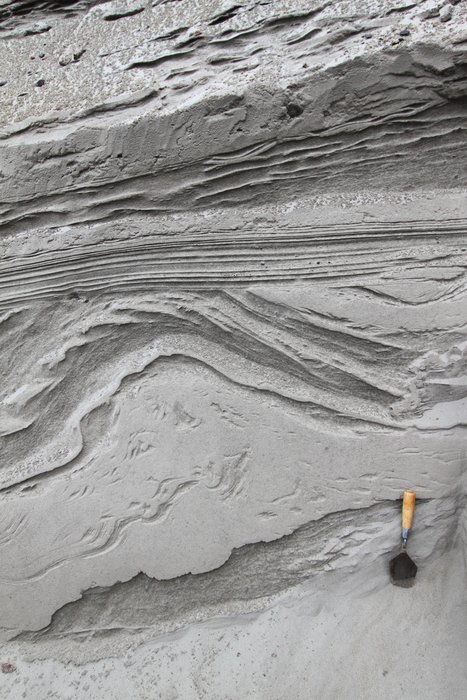Cross-cutting relationship

At the bottom are layers of mud and sand that have been bent up into a fold. This sort of folding is typically related to liquefaction, possibly due to an earthquake or to sediment shifting downhill after it was deposited. These deformed sediments are cut off at the top by erosion, and flat sand layers are deposited on top of the surface where erosion happened. These layers formed on the bottom of a lake, where erosion is unusual. The flat sand layers are also somewhat unusual - in most places sand formed ripples instead of being deposited in flat layers. Above the flat-layered sand is normal lake-bottom layers of rippled sand and flat mud.
The overall sequence recorded here is, in short - Layers of sand and mud followed by liquefaction, then by erosion, then by deposition of flat ("planar laminate") sand layers, and finally by ordinary lake sand and mud deposition.
One explanation for this sequence is that there may have been an earthquake that liquefied lake sediments. The earthquake also generated a tsunami that scoured the sediment surface, and laid down flat layers of sand before ordinary lake deposition resumed.
Get the one you need:
| File Size: | 17.8 KB | 66.2 KB | 102.3 KB | 421.1 KB | 10.4 MB |
| Image Size: | 300px | 600px | 750px | 1600px | Original |
Embed
1. Select a size:
2. Cut and Paste: